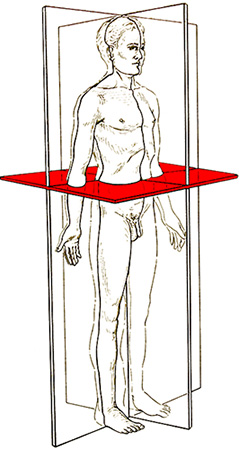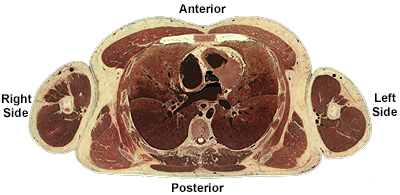

The cross-sectional plane (syn. transverse plane, horizontal plane) passes through the body at a right angle to the long axis of the body. It divides the body into superior and inferior parts. In clinical medicine the cross-sectional plane is commonly referred to as an axial or transaxial plane. The cross-sectional plane is particularly relevant to radiology where computed tomography (CT) scans are primarily generated in the cross-sectional (axial) plane.
A CT scan is positioned for viewing as if the patient were lying on their back and the viewer was positioned at the patient’s feet looking superiorly toward the patient’s head. From this perspective the anterior surface of the patient is up, the posterior surface of the patient is down, the left side of the patient's body is to the viewer’s right, and the right side of the patient’s body is to the viewer’s left as depicted in the cadaveric cross-section below.

All of the cadaveric and CT images of Cross-Sectional Anatomy
are positioned on the screen in this manner.